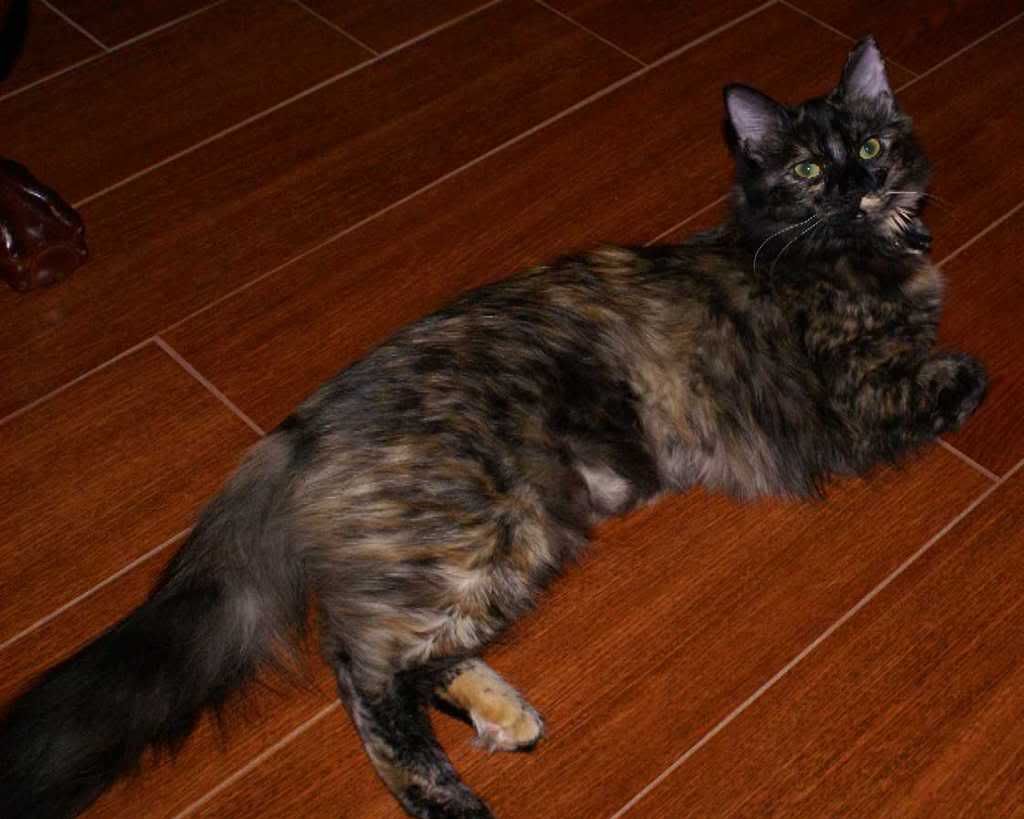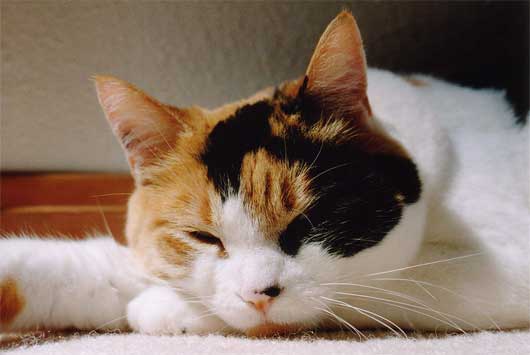Home › Forums › Miscellany › Community › Kitty question *pic of kitten added pg2*
- This topic has 38 replies, 1 voice, and was last updated 16 years, 7 months ago by Kristen.
-
AuthorPosts
-
September 10, 2008 at 12:56 am #731973
A patched tabby… cool!
Thanks for the info!
September 10, 2008 at 1:07 am #731974So what would my kitty be:
black, white, and orange tabby colors? Regular calico, patched tabby, or tortie?That picture needs to be captioned and put in the Caturday thread!
September 10, 2008 at 1:25 am #731975keschete wrote:
Isn’t he a tortie, not a calico? Calicos have white, and more solid blocks of color, right?
Like this guy….
 September 10, 2008 at 2:02 am #731976
September 10, 2008 at 2:02 am #731976I found this…
September 10, 2008 at 4:33 pm #731977Dragon87 wrote:keschete wrote:
Isn’t he a tortie, not a calico? Calicos have white, and more solid blocks of color, right?
Like this guy….

You are right, I mis-spoke…Chupacabra is a tortoiseshell, calicos are larger patches of orange,
black and white, but if the patches are tabby stripped not solid then they are a patched tabby.All the genetics are the same for any cat who has black, white and orange or blue, white and cream.
4. Torties, patched tabbies, and calicos
If your cat is randomly patched with different colors, you probably have a tortie, patched tabby, or calico.
For cats without white markings:A “tortoiseshell” or “tortie” is randomly patched all over with red, black, and cream. The patches may be very mingled, or they may be more distinct.
A “blue-cream” (also called “blue tortie” or or “dilute tortie”) is randomly patched all over with blue and cream. This is a soft, pastel color.
A “brown patched tabby” looks almost like autumn leaves, with patches of brown tabby and patches of red tabby. This color is also known as “torbie” because it is a tabby tortie.
A “blue patched tabby” is a soft color with patches of blue tabby and patches of cream tabby.
There is special terminology for tortoiseshells with white markings, depending on how much white they have:
A “tortoiseshell and white” or “blue-cream and white” has only small white areas. The body has mingled colors.
A “calico” has more white. As a rule, the more white there is on the cat, the larger and more distinct the red and black patches will be. You’ll notice that the large black patches are solid black, and the large red patches are actually red tabby.
A “dilute calico” has the same amount of white as a calico, but instead of red and black patches, it has blue and cream patches. The blue patches are solid blue, and the cream patches are cream tabby.
A “patched tabby and white” or “torbie and white” may have any amount of white. A patched tabby with a lot of white, like a calico, has large distinct patches of color, and is sometimes called a “patterned calico,” “calico tabby,” or “caliby.”September 10, 2008 at 4:39 pm #731978I also heard Calico’s are female only is that correct?
September 10, 2008 at 4:52 pm #731979Dragon Master wrote:I also heard Calico’s are female only is that correct?
It’s like 99.9% are female. There is the rare occassional male, but they are usually sterile.
September 10, 2008 at 6:02 pm #731980I want a new kitty =
September 10, 2008 at 7:37 pm #731981Wow that was alot of coloring info… I know the basics of it.. but that was a good amount of info in one spot… haha. Yay for people that know more then I do (since at nait I really feel like I’m the person with the most knowledge and it SUCKS! Everyone wants help from me)!
-
AuthorPosts
- You must be logged in to reply to this topic.
